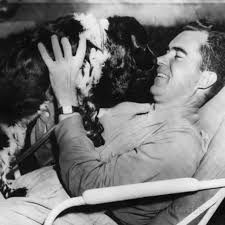In 1908, as Theodore Roosevelt had alienated black supporters (default Republicans) for his role in the Brownsville Affair, the Democrats were petitioned to include an anti-lynching plank in their platform. William Jennings Bryan scuttled the thing, Populism rearing its ugly side and the Democracy starting with the fist-tight thirteen state Confederate “Solid South”. Bryan was associated with the populism of Benjamin Tillman, and regularly the perjorative “Bryanism” placed next to “Tillmanism” — Benjamin Tillman came to fight on behalf of the Rural White Farmers of South Carolina against the n-gers and the Elitists, Jesse Helms’s “University of Ngs and Communists” sentiment was essentially stolen from him, as any number of Southern demogogic political themes over the years. In the fighting between the politics of Grover Cleveland and William Jennings Bryan for what the Democratic Party — Bryan served as a king-maker in pushing forward the “Progressivism” that marked the Woodrow Wilson Administration.
WEB Du Bois would roll the dice in supporting Woodrow Wilson for president in 1912. Wilson segregated the federal government past the previous Taft adminstration, and when Du Bois came for a visit to the White House to express his displeasure, was summarily dismissed and told to, in effect, shove it.
The Democratic Convention of 1924 was a protracted fight between Alfred Smith — Urban New Yorker Catholic “Wet” Tammany Hall Connected — against William Gibbs McAdoo, who considered himself in the sort of populist political lineage of William Jennings Bryan and Woodrow Wilson — and tied to the Klan. While this convention is historically thought to have been fought over the issue of Prohibition, that was one of any number of cultural divisions which marked over deeper issues and concerns.  For one, the two sides fought over whether to condemn the Klan by name in the Party Platform — the even split in this voting showed the doom that pervaded the party no matter who they were to nominate — as so happened the rather forgettable conservative Democrat John Davis.
Franklin Roosevelt won the Democratic nomination by starting with the Democratic coalitions who had backed Bryan and MacAdoo, though cut through the lines in his political realignment and reversed this item with respect to the two party factions.  By 1936 he managed to have Ellison “Cotton Ed” Smith of South Carolina flee the convention when a black minister gave the invocation, and when he looked out over the convention and saw that a bi-racial convention, or to quote him directly:
“When I came out on the floor of that great hall, bless God, it looked like a chckerboard: a spot of white here, a spot of black there. But I kept going down that long aisle, and finally found the great standard of South Carolina. And, praise God, it was a spot of white! I had no sooner taken my seat when a newspaperman came down the aisle and squatted by me and said, “Senator, do you know a nigger is going to come up younder in a minute and offer the invocation?â€Â I told him, I said, “Now don’t be joking me, I’m upset enough the way it is.â€Â But then, bless God, out of that platform walked a slew-footed, blue-gummed, kinky-headed Senegambian! And he started praying and I started walking. And as I pushed through these great doors and walked across the vast rotunda, it seemed to me that old John Calhourn leaned down from his mansion in the sky and whispered in my ear, “You did right, Ed.â€
During the Roosevelt administration, when a black leader met with the president to ask him to reform the Segregation of the American South, Roosevelt responded that “you have to make me do it” by way of providing him the space in public opinion and activism. A difficult slug to be sure, and a rather cynical deal.
In 1948, Hubert Humphrey came out shouting to come to the embracing the light of Civil Rights and shedding the dark of States’ Rights, and Southern Dixiecrats stormed out of the convention. By 1956, the Democratic Party Platform tepidly walked back away from that “light” of civil rights and stated simply about the Brown versus Board of Education decision was historic indeed. Such was the mark of Gradual Incrementalism promised by the Stevenson campaign, as against Eisenhower’s promise of Incremental Gradualism.



